Environment Alert Bulletins
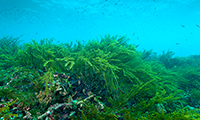 |
Caulerpa Taxifolia, a Growing Menace for the Temperate Marine Environment - Environment Alert Bulletin 1Caulerpa taxifolia is a fast-growing marine seaweed that is originally found in warm tropical waters. It has been used widely as a decorative plant in the marine aquarium trade. For the first time in history, a genetically altered seaweed is colonising very large areas of the marine environment in an uncontrollable way. The green alga, mutated by exposure to chemicals and ultraviolet light, has shown dangerous capabilities allowing it to adapt, colonise, and threaten multiple biotopes. The Alert delves into the environmental impacts of Caulerpa Taxifolia and reviews several eradication methods. Large-scale eradication remains far out of reach with current means. |
 |
Impacts of Summer 2003 Heat Wave in Europe - Environment Alert Bulletin 2The extreme drought and heat wave that hit Europe in the summer of 2003 had enormous adverse social, economic, and environmental effects, like the death of thousands of vulnerable elderly people, the destruction of large areas of forests by fire, and effects on water ecosystems and glaciers. It caused power cuts and transport restrictions and a decreased agricultural production. The losses are estimated to exceed 13 billion euros. The Alert discusses the environmental impacts of this event. This heat wave that can be seen as one more warning of impacts from a warmer climate on populations and ecosystem. |
 |
Wildland Fires, a Double Impact on the Planet - Environment Alert Bulletin 3Annually, wildland fires annually burn an area half the size of Australia and generate nearly 40% of total anthropogenic carbon dioxide (CO2). Their impact in terms of deforestation, climate change and loss of biodiversity is significant. The year 2003 was one of the worst in history in terms of loss of human life and damage to the environment and infrastructure. Fires are a natural part of many ecosystems, 90% are caused by human activities. The Alert emphasizes the environmental impacts of wildland fires. Unlike most geological and meteorological hazards, wildfires are a natural but human-influenced hazard, which often can be predicted, controlled and in many cases, prevented. |
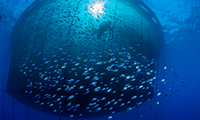 |
Overfishing, a Major Threat to the Global Marine Ecology - Environment Alert Bulletin 4In 2002, 72% of the world's marine fish stocks were being harvested faster than they could reproduce. Fishing activities have various negative impacts on marine ecosystems. The greatest concern is the rapid depletion of fish population due to extensive commercial fishing. One-fourth of the total catch (27 million tonnes in 2003) is unintended. The Alert enhances our understanding of the environmental impacts of overfishing. The best way to reduce by-catch would be to lower the total fishing effort as much as possible, and develop selective technologies, better regulations, and stronger enforcement. |
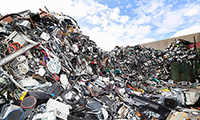 |
E-waste, the Hidden side of IT Equipment's Manufacturing and Use - Environment Alert Bulletin 5The production of electrical and electronic devices is the fastest-growing sector of the manufacturing industry in industrialised countries. At the same time, technological innovation and intense marketing engender a rapid replacement process. Every year, 20 to 50 million tonnes of electrical and electronic equipment waste ("e-waste") are generated world-wide, which could bring serious risks to human health and the environment. The Alert examines the environmental impacts of E-waste. Some countries are implementing policies and programmes to prevent pollution and promote waste minimisation. Key among these approaches is the Extended Responsibility (EPR). |
 |
Tourism Expansion: Increasing Threats, or Conservation Opportunities? - Environment Alert Bulletin 6Tourism generates 11% of global GDP, employs 200 million people but produces 4.8 million tonnes of waste yearly and consumes as much energy as a country the size and development level of Japan. The number of tourists is expected, at least, to double to 1.6 billion by the year 2020. Sustainable management of natural resources and wastes is essential for the well-being of this economic sector and natural ecosystems. The Alert explores the environmental impacts of global tourism expansion. While it is now generally understood that tourism will remain a successful industry only if it is developed and managed by integrating environmental best practices and tools, there are still far from being widely applied |
 |
Illegal Oil Discharge in European Seas - Environment Alert Bulletin 7One-third of global marine oil transportation passes through European waters. Apart from oil tankers, other cargo ships pose a constant threat of small to medium-scale oil pollution from illegal dumping of oily wastes with at least 3000 major events per year around Europe. The devastating consequences of occasional “newsworthy” accidents are outmatched by constant small, but still harmful, releases from oil industry transport. The Alert expounds on the environmental impacts of illegal oil discharge in European Seas. The most effective method for reducing the amount of oil in our seas would be to use less oil. Increased energy efficiency and renewable forms of energy such as solar and wind are clean alternatives that could reduce our dependence on oil. |
 |
Gold Prices On The Rise, Environment Under Pressure - Environment Alert Bulletin 8Although the gold industry is often presented as a “first foreign direct investment” leading to positive outcomes in many developing countries and securing the wealth of many nations, it is also clear that some of its practices have negative environmental impacts. The use of hazardous chemicals and the generation of large amounts of mining waste often result in lasting pollution for the environment. The Alert features answers to questions such as: Are such current extraction processes sustainable and, if they are, at what costs? No specific international legislation is currently in place for the mining industry. Thus advocacy, greater information and public awareness campaigns will be necessary to bring about more sustainable gold mining practices, as well as a reduced jewel production. |
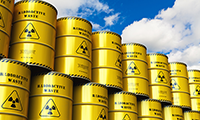 |
Nuclear Waste: Is Everything Under Control? - Environment Alert Bulletin 950 years after the opening of the world's first civil nuclear power station, very little radioactive waste produced has been permanently disposed of. The Alert focuses on the environmental impacts of nuclear waste. Given the ever-growing demand for energy and the diminution of economically extractable fossil fuels and their own environmental consequences, it is increasingly likely that many countries’ energy needs will not be met by alternative sources and energy conservation alone, and some countries will consider pressing ahead with the nuclear option. Before considering this option, however, countries should take the political and technical steps necessary to begin the process of disposing of their accumulated waste stockpiles to ensure that viable and proven disposal routes exist for all new wastes that will be generated. |
 |
The Environmental Price to Pay for Heavy Goods Traffic - Environment Alert Bulletin 10New methods of production and consumption, as well as ongoing economic growth in the European region in recent decades, have led to an increasing demand for faster and more flexible transport modes, often favouring road freight. This trend is mainly sustained by the fact that environmental costs are not internalised (included) in road transport prices. Developing and switching to more environmental-friendly transport modes will require major efforts in all European countries. The Alert highlights the environmental impacts of heavy goods traffic. |
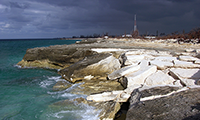 |
Coastal Degradation Leaves the Caribbean in Troubled Waters - Environment Alert Bulletin 11Recent assessments in the Caribbean indicate that suspended solids in the coastal and marine environment are already leading to severe environmental impacts in the region. Key economic sectors are threatened by sedimentation and excessive runoff, and future scenarios indicate potential increases in the amounts of sediments transported from land to sea. Can something be done before local livelihoods may be irreversibly affected by these processes? The Alert identifies the environmental impacts of coastal harmful algal blooms. Contaminated runoff and sedimentation are strongly related to human activities, and best management practices can help significantly reduce their sources and impacts. |
 |
Human Induced Harmful Algal Blooms - Environment Alert Bulletin 12The occurrence of coastal harmful algal blooms (HABs) over the last several decades has become a worldwide environmental concern. Some of these HABs are caused by anthropogenic nutrient pollution and can harm whole marine ecosystems which, in the worst cases, may become devoid of life. Aside from biodiversity impacts, they can also menace coastal economies. The Alert illuminates the environmental impacts of coastal harmful algal blooms. There exists a considerable time lag between the pressures imposed on the environment, the subsequent development of policies, the implementation of measures and, eventually, the visible manifestation of the impact of such response. It often takes 15 to 20 years before meaningful commitments to joint management can be secured, and an even longer time before the environment begins to respond. There is still a long way to go, but it is now fundamentally important to reduce eutrophication impacts on natural systems. |
Contact: unep.foresight@un.org
